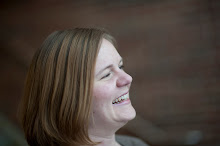
An example of a "dream scene" from the diaries. This is meant as a teaching element, to help the women imagine what the possibilities for their future might be and what goals they might set.
There are a handful of guaranteed items that you can count on when working internationally;
Communication will go awry.
Assumptions you didn’t even know you made will be proven wrong
Everything will take longer than you think it “should”
All of these elements are present in my current project. Between the head bob, the language barrier and vastly different experiences, communication can be quite a trick. One of the hardest tasks has been this first week of assessment where Leigh and I have tried to navigate meetings and get a clear-ish picture of what is going on and where we are needed. I enjoy the challenge, but it does make one a little nervous because you don’t want to create an inaccurate image in your head and then make decisions based off of it. Especially with the kind of deference that we are being given, and weight to our opinions. I think we have managed to conclude that HPWDS is very good at collaboration, community networking and program participation. They are very weak on organizational structure, evaluation, strategic and future planning and decision-making. This actually matches quite well with the skills we are offering the organization.
On Wednesday of last week Leigh and I suffered through an interminable 6 hour meeting during which we were paraded before a variety of community members (in a show of status) and then sat silently while waiting for Mohanan to take charge—which he never did. The main topic of discussion was social indicators (or at least I think so, it was so muddled). We wanted to know the social issues specific to the region that the survey tool we’re designing should make sure to address. Instead, the staff spent time discussing how to pictorialize each item they brought up, I would say 20 minutes an item with sketches and everything.
PAUSE Let me briefly explain the nature of an ILS diary (which we were commissioned to create). All social service programs need a component of evaluation to (1) prove externally that they are working and (2) identify programmatic strengths and weaknesses in order to use the most effective interventions. The most used method to collect this kind of data is via surveys of relevant stake-holders, including participants. Surveying quickly becomes interviewing (which is very extractive in nature) when you are interacting with an illiterate population. Therefore my professor, Helzi Noponen, has spent years developing a method of pictorializing a social/poverty indicators survey for illiterate populations primarily taking part in micro-credit programs. This is the nutshell version of what an ILS diary is.
So, when the staff is not discussing what questions they want to know about and are instead busily drawing pictures for us (which we cannot use), you can imagine our frustration. Their expertise is the area, the participants, social needs and their programs. Our expertise is in survey design, ILS diaries and strategic planning. Arghhhh! As the meeting continued and continued and continued we came to the conclusion that although HPWDS has been asking for an ILS diary from Helzi for over 5 years, they do not truly understand the purpose of the tool. This fits with our other observations that they are unduly focused on outside help and expertise and seek out whatever they can. The implications of this are fairly large because in order for us to design and present a useful diary to the staff we must be able to have meaningful interactions about the issues at hand for the organization and evaluation—NOT picture drawing.
Therefore, this week Leigh and I are putting together a basic and somewhat specific ILS diary for the organization. But, I am also working on a half day basic training for the staff on evaluation. HPWDS has operated since 1995 without a single piece of evaluation and seemingly without the notion to even ask, “Are our interventions working?” We will try and spend a day on the training to get everyone close to the same page before attempting to introduce the diary and do any group editing. Send us good vibes that it is successful!
[P.S. I hope this work talk did not bore you. I’ve been getting emails that people are interested, if this is not true just correct me and I’ll stick to the travel portions.]

































